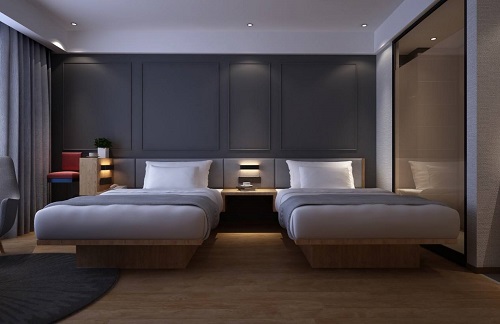
Room supply growth favoring higher-rated hotels and the aftermath of recent hurricanes are boosting overall extended-stay hotel performance.
Both factors were present during the latter stages of the last expansion period for the hotel industry when the performance trends of extended-stay hotels and the overall hotel industry were very similar. More recently, however, extended-stay hotels are defying the cycle.
During the last expansion period for the hotel industry, which effectively ended in 2008, extended-stay hotel room supply increased at three to four times the rate of overall hotel room supply.
Increasing supply growth coupled with decelerating gains in demand caused hotel occupancy to fall and extended-stay occupancy followed the same general trend.
The broader declining trends in extended-stay and overall hotel occupancy were similar from 2004 through 2008, although because of faster supply growth and much greater average-daily-rate gains, extended-stay hotels suffered a sharper drop in occupancy in 2006. Trends in revenue per available room correlated closely, especially since 2006.
During the current expansion period, extended-stay hotel supply growth is once again increasing at a faster pace than overall hotels. Both are accelerating, but extended stay is faster and supply is growing by more than four times the pace of overall room supply.
Like 2005 and 2006, rapid supply growth and strong increases in extended-stay ADR resulted in negative changes in extended-stay occupancy each quarter starting in mid-2015 with a trough in Q1 2016. Unlike 2005 and 2006, however, one year later, quarterly changes in occupancy turned positive, and in Q3 2017, strong demand growth produced an uptick in extended-stay occupancy, which reached an all-time high for Q3.
Seven to eight years into an expansion period, hotel demand growth usually decelerates and/or plateaus as it has done for the overall hotel industry since about since 2015. However, extended-stay demand growth has accelerated almost every quarter since Q4 2015.
With supply, demand, ADR and now occupancy all increasing, extended-stay room revenues have been heading in the opposite direction from overall hotel room revenue since mid-2016, and especially from the start of 2017.
Extended-stay hotel revenue posted double-digit gains in 12 of the last 15 quarters and are currently growing faster than in 2010, which was the beginning of the current expansion period.
Although extended-stay hotel RevPAR has increased more than the overall hotel industry since 2012, like between 2004 and 2008 the trend lines were very similar. By Q3 2016, however, the RevPAR trends started diverging as the rate of increase in extended-stay RevPAR accelerated and maintained the climb over five consecutive quarters for the first time since 2013 and 2014.
With more than 30% of extended-stay hotel rooms in two regions affected most by recent hurricanes, extended-stay hotels could get a larger boost than the overall hotel industry in Q4 2017, and RevPAR growth trends will continue to diverge.
Nevertheless, deep into an expansion period, 2017 will be an exceptional year for extended-stay hotels.










Service Hotline
Work Time:Mon-Fri 9:00-18:00
UTC+8

Sinoexpo Digital Platform
Copyright 2006-2024 Shanghai Sinoexpo Informa Markets International Exhibition Co., Ltd. All rights reserved
沪ICP备05034851号-77
 沪公网安备 31010402000543号
沪公网安备 31010402000543号